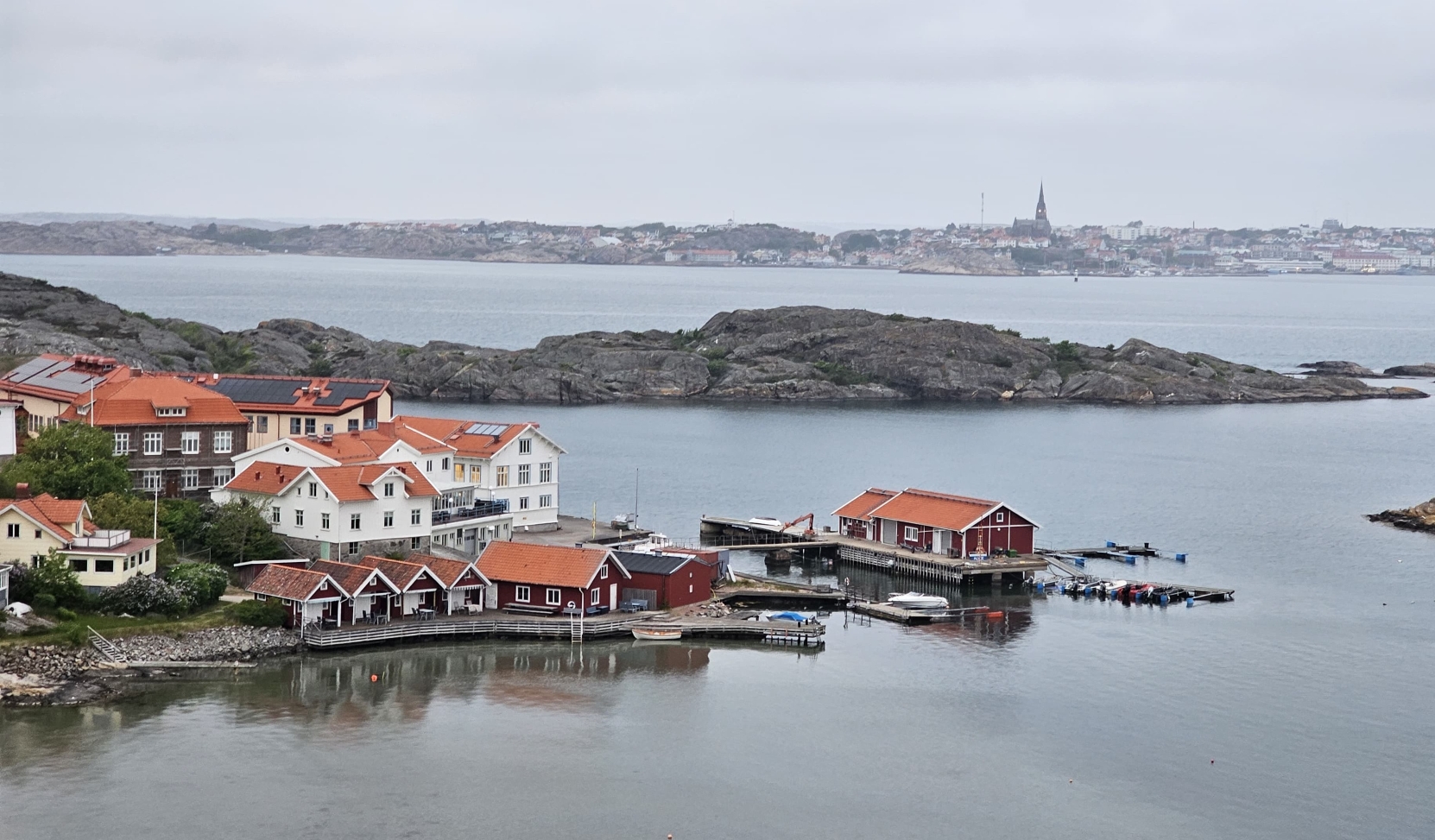“No Future Without the Sea” - the Role of Algae in the Future Food System

Kristineberg Marine Research Station is located right by the sea on the Swedish west coast. It is the world’s third oldest marine research station, and since it was founded in 1877 it has attracted researchers from all over the world. During a week in May each year, KTH Food affiliates Fredrik Gröndahl and Daniel Franzén bring a group of KTH students to the station for field studies, and during the rest of the year they research, for example, how algae can be used as a resource.
Below the surface is a world of possibilities. Algae are aquatic organisms that grow quickly, bind carbon dioxide, and produce large amounts of biomass. They have many areas of use, not least within the food sector; sea-farmed algae can be used as a food ingredient, while algae that wash up on beaches can be collected and used as a biofertilizer.
Blue food on a blue planet
“There is no future for the planet without the sea”, Fredrik Gröndal says, and underlines that 71 percent of the Earth’s surface is made up of oceans, seas, and lakes. The remaining 29 percent consists of land, but far from all land surface is suitable for farming. Furthermore, arable land often competes with other types of land use, and therefore it’s important to also use blue surfaces. Aquaculture offers accessible space and nutrition, providing an opportunity to relieve land-based production and contribute to sustainable development.
Gröndahl has run several projects on the cultivation and usage of algae, and since 2020 he has been responsible for Blue Food – Centre for future seafood. The centre, which is funded by Formas, conducts research on different types of foods from lakes and seas, for example sustainable cultivation of algae, fish, and other marine food resources. A protein shift is needed to reduce the climate impact of meat production, and algae is a plant protein that can contribute to the transition. Part of the research linked to Blue Food is conducted at Kristineberg. Here, the water is significantly saltier than in the Baltic Sea, and the species composition is therefore different, making the area ideal for research on algae and mussels.
From beach find to resource
Food research connected to KTH is also conducted in other parts of the country, for example on Gotland. There, Daniel Franzén and Fredrik Gröndahl research beachcast, algae that are washed ashore, which is a much bigger problem in the Baltic Sea area than on the west coast.
The beachcast, locally called släke, has great historical significance. During the 19th and early 20th centuries, it was used as a fertilizer and considered such an important resource that its availability increased the value of the land. “But it’s not used today. Instead, it lies on the shores and costs money”, says Franzén. Currently, people pay for the disposal of the algae, which entails an economic cost while its potential as a biofertilizer is overlooked.
The beachcast is a nutritious resource, and it increases and changes character as the eutrophication of the Baltic Sea continues. Franzén believes that the beachcast is currently not economically viable, but that managing it represents an environmental gain because it results in excess nutrients being removed from the sea. The fact that these nutrients could then replace artificial fertilizers could in turn reduce the environmental impact of commercial fertilizer production. Franzén hopes that the algae will in the future be managed by municipalities and quality assured, so that it becomes a real resource benefiting both the soil and the sea.
Field research
Both Franzén and Gröndahl conduct a part of their research in the field, often in collaboration with other universities and the industry. At Kristineberg Marine Research Station, Gröndahl was recently visited by his collaborators from Uppsala Campus Gotland. They took eDNA samples in the algae farm, with the purpose of investigating if the fish stock is larger in the algae farm than outside it, meaning whether the farm promotes biodiversity.
“The work is close to action, which is fun but also difficult”, Gröndahl comments. A balance is required in the co-learning between academia and practice. It’s important to keep the research on track, to ensure that the results are useful to society and grounded in reality despite the complexity.
On Gotland, the work takes place on the beaches, where the washed-up algae are sampled. Franzén collaborates with farmers and cultivators, who have so far tested using the beachcast to grow food such as potatoes, wheat, and carrots. The results are evaluated jointly, and life cycle analyses are carried out to examine sustainability from all perspectives. “It is very important to collaborate with the industry. It gives us the right information through primary data, and we can follow the product chains”, he says.
A new industry emerges
Gröndahl and Franzén’s research illustrates two ways in which algae can play a role in the food system of the future. Gröndal says that the development surrounding algae is progressing rapidly and that the interest has increased significantly since he began his research on the topic. “It is a new industry that is emerging”, he says. “I can already see that progress has been made, and there are now 15 Swedish companies working on this.”
The fact that algae grow quickly, bind carbon dioxide, and require neither fertilizer nor freshwater gives them the potential to contribute to more sustainable food production. In the future, algae and aquaculture could become a complement to forestry and agriculture, reducing pressure on land-based resources and increasing the resilience of our food system.
“Algae is the shit,” Gröndahl concludes.
Written by: Andrea Kron
